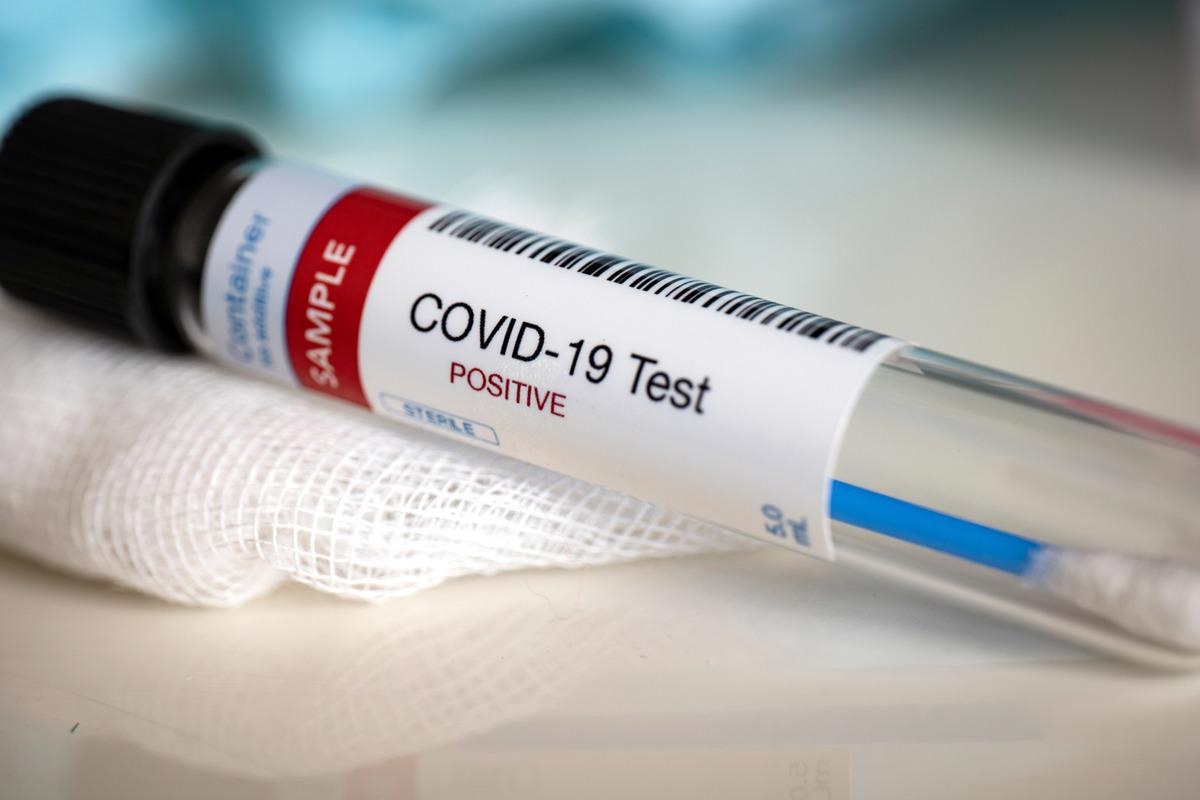A new Journal of Infection and Chemotherapy study describes an immunocompetent individual with prolonged severe acute respiratory syndrome coronavirus 2 (SARS-CoV-2) shedding 221 days after their initial coronavirus disease 2019 (COVID-19) diagnosis.

Study: Case of a pregnant woman with probable prolonged SARS-CoV-2 viral shedding 221 days after diagnosis. Image Credit: Myriam B / Shutterstock.com
COVID-19 testing during pregnancy
Pregnant women are typically tested for SARS-CoV-2 infection before hospital admission. Generally, pregnant women are questioned about the presence of any symptoms and history related to travel, occupation, and close contact with infected individuals.
Whenever a moderate to high risk of infection is predicted, pregnant women should be tested. However, some healthcare facilities test all pregnant women, irrespective of symptoms and personal history.
Case of a pregnant Japanese woman
A 20-year-old Japanese woman was diagnosed with COVID-19 at the end of May 2021, which was identified by a SARS-CoV-2 antigen test. This patient had a fever and no other symptoms and was quarantined for 10 days.
Since this initial diagnosis, the patient did not visit crowded places or display any symptoms. Her family members also did not exhibit any COVID-19 symptoms.
Later, the patient realized that she was about eight weeks pregnant during the time she had a fever. In September and October 2021, she was vaccinated with two doses of a COVID-19 messenger ribonucleic acid (mRNA) vaccine.
In December 2021, the patient was admitted to the hospital for delivery. She had an uncomplicated pregnancy and normal vaginal delivery.
The woman underwent a routine SARS-CoV-2 reverse transcription-polymerase chain reaction (RT-PCR) test on a nasal and oral swab, which was collected during admission. The patient was found to be SARS-CoV-2 positive with a cycle threshold (Ct) value of 36.4, thus indicating a low viral load. This was 221 days after the initial COVID-19 diagnosis.
Testing for variant strains
The samples taken from the patient in this study were analyzed for the presence of mutations indicative of the variant. To this end, the samples showed the presence of the
Alpha variant, whereas Delta and Omicron variant mutations were confirmed to be absent. Genomic sequencing was challenging due to the low viral load in the samples.
Case of prolonged viral shedding
In December 2021, the Alpha variant was no longer in circulation in Japan, as the COVID-19 wave caused by the Alpha variant in Japan ended in July 2021. The patient had no symptoms or known contact with SARS-CoV-2-positive individuals. Since the patient’s viral load was very low, it was concluded that this was a case of prolonged viral shedding; the longest duration ever reported.
Geographically, this woman is from Ibaraki Prefecture, where the Alpha variant was dominant from April to July 2021. Comparatively, the Delta variant was the dominant circulating strain in this area by mid-September 2021, which is when it almost completely replaced the Alpha variant.
When the patient in the current study was tested SARS-CoV-2 positive, the Omicron variant was dominant in the region. Almost all SARS-CoV-2 infections in January and February 2022 were due to the Omicron variant. If the woman was reinfected, it would more likely have been due to the Delta or Omicron variant.
Several studies have shown that individuals with mild to moderate and severe COVID-19 can test RT-PCR positive up to 17.2 days and 19.8 days after the symptom onset, respectively. Additional reports of prolonged viral shedding have also been published.
According to published data, the average duration of SARS-CoV-2 shedding was 17.0 days and the maximum duration was 83 days. Usually, prolonged viral shedding is associated with older age, hypertension, coronary artery disease, and diabetes mellitus; however, pregnancy has not been previously associated with this phenomenon.
Notably, one previous case study reports prolonged viral shedding during pregnancy after 104 days of the initial positive test.
Reasons for prolonged viral shedding
There remains a lack of understanding of the mechanism for prolonged viral shedding during pregnancy.
During pregnancy, there are physiological changes in the immune environment within the maternal body that are predominantly Th2 cell-mediated with attenuation of Th1 cell-mediated immunity. As a result, a pregnant woman is susceptible to intracellular pathogens, including viruses.
In fact, it has been observed that the lungs of pregnant mice have an eight times higher viral load of influenza virus than non-pregnant mice. This implies that viral clearance is impeded during pregnancy.
Th2-dominant immunity promotes the expression of anti-inflammatory cytokines. Thus, it is possible that in pregnant women, the immune response to SARS-CoV-2 infection is Th2-dominant, which may result in mild COVID-19 symptoms in pregnant women. Thus, the Th2-dominant state may cause prolonged viral shedding and prevent severe COVID-19 in this patient population.
Limitations
Due to the low viral load in the patient’s sample, no genomic sequence data was available. Therefore, Alpha variant confirmation was done by variant strain screening PCR test.
- Akine D, Sasahara T, Koido A, et al. (2022). Case of a pregnant woman with probable prolonged SARS-CoV-2 viral shedding 221 days after diagnosis. Journal of Infection and Chemotherapy. doi:10.1016/j.jiac.2022.03.012.
Posted in: Medical Research News | Women's Health News | Disease/Infection News
Tags: Antigen, Anti-Inflammatory, Cell, Chemotherapy, Coronary Artery Disease, Coronavirus, Coronavirus Disease COVID-19, covid-19, CT, Cytokines, Diabetes, Diabetes Mellitus, Fever, Genomic, Genomic Sequencing, Healthcare, Hospital, Immune Response, immunity, Influenza, Intracellular, Lungs, Omicron, Polymerase, Polymerase Chain Reaction, Pregnancy, Respiratory, Ribonucleic Acid, SARS, SARS-CoV-2, Severe Acute Respiratory, Severe Acute Respiratory Syndrome, Syndrome, Transcription, Vaccine, Vaginal, Virus

Written by
Dr. Shital Sarah Ahaley
Dr. Shital Sarah Ahaley is a medical writer. She completed her Bachelor's and Master's degree in Microbiology at the University of Pune. She then completed her Ph.D. at the Indian Institute of Science, Bengaluru where she studied muscle development and muscle diseases. After her Ph.D., she worked at the Indian Institute of Science, Education, and Research, Pune as a post-doctoral fellow. She then acquired and executed an independent grant from the DBT-Wellcome Trust India Alliance as an Early Career Fellow. Her work focused on RNA binding proteins and Hedgehog signaling.
Source: Read Full Article